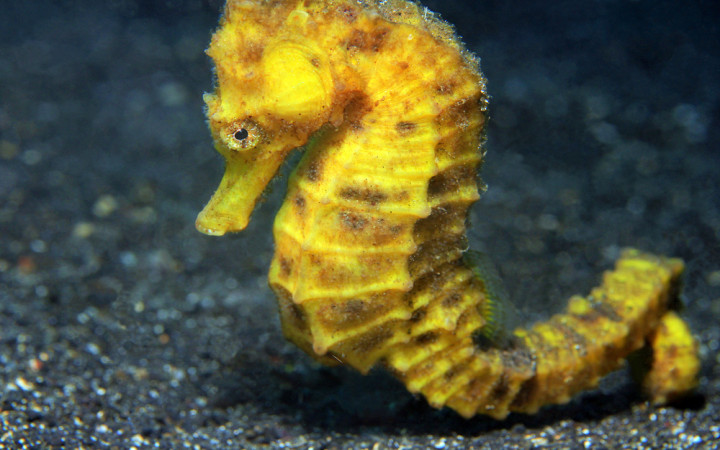Today’s Wonder of the Day was inspired by grady. grady Wonders, “Can you ride a seahorse? ” Thanks for WONDERing with us, grady!
Do you love horses? Who doesn't, right? Today's Wonder of the Day isn't about those big, beautiful horses that gallop in the fields, though.
Today, we're diving deep into the sea to explore some small aquatic “horses" that are beautiful and amazing. What are we talking about? Seahorses, of course!
In the seas of the world, there are 47 species of seahorses. These fish are part of the genus Hippocampus, which comes from the ancient Greek words meaning “horse" and “sea monster."
Seahorses can be found most often in shallow waters in tropical areas. They tend to prefer to live in sheltered areas, such as sea grass beds and coral reefs.
Many seahorses are as small as a half-inch in length. The largest seahorses can grow to just over a foot in length.
They get their name for their resemblance to horses. Although they're fish, they don't have scales. Instead, they have thin skin that's stretched over bony plates arranged in rings over their bodies.
Seahorses are quite unique creatures. Unlike most other types of fish, they swim upright and they do so very slowly. For example, the dwarf seahorse is considered the world's slowest moving fish, traveling just five feet per hour! Much of the time, you can find seahorses resting with their tails wrapped around a nearby stationary object.
Seahorses have flexible necks and long snouts that they use to suck up food. They search for food constantly and can eat up to 3,000 brine shrimp in a single day!
They also have a unique bony “crown" on their heads called a coronet. Like a fingerprint, the coronet is distinct for each seahorse.
One of the most interesting things about seahorses is that it is the male who carries seahorse eggs until they hatch. This makes seahorses one of the few animal species on Earth in which the male bears the unborn young.
During the mating process, male and female seahorses often hold tails and engage in a courtship dance. However, contrary to popular belief, seahorses do not usually mate for life.
Scientists worry that many seahorse populations are becoming endangered due to the fact that many of their habitats, such as coral reefs, are disappearing. Over fishing may also be a factor. Scientists estimate as many as 20 million seahorses may be caught and sold each year for use in Chinese herbal medicines.




